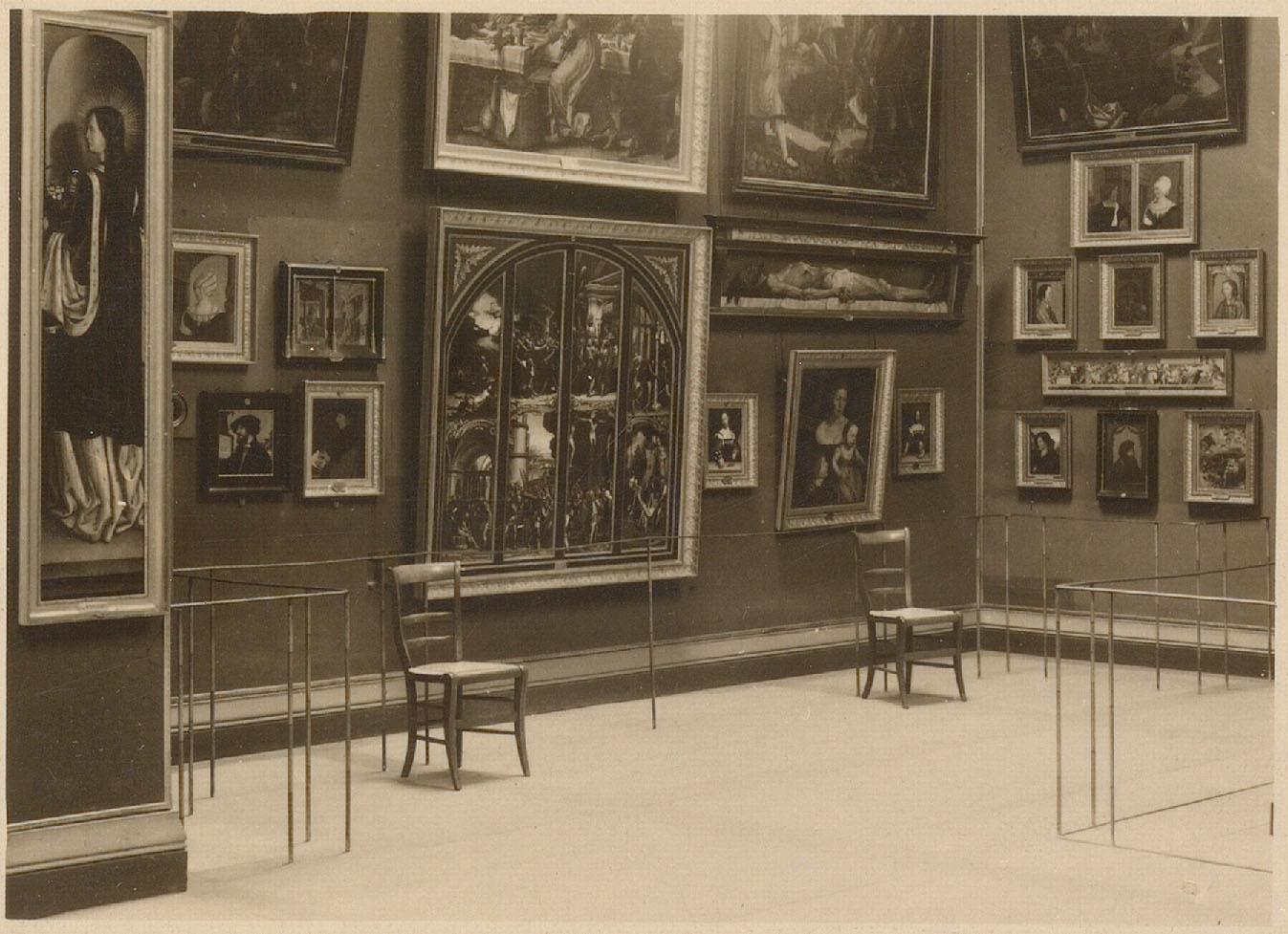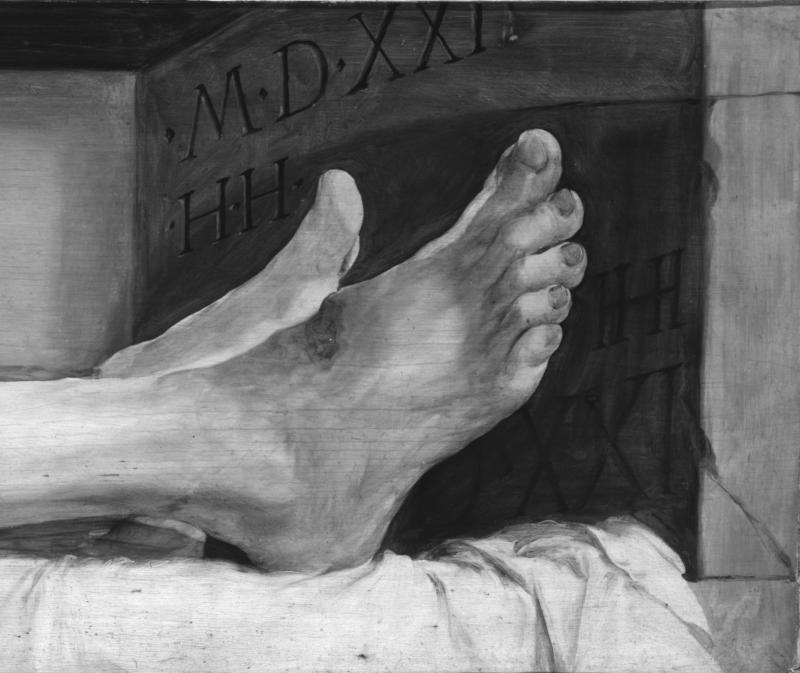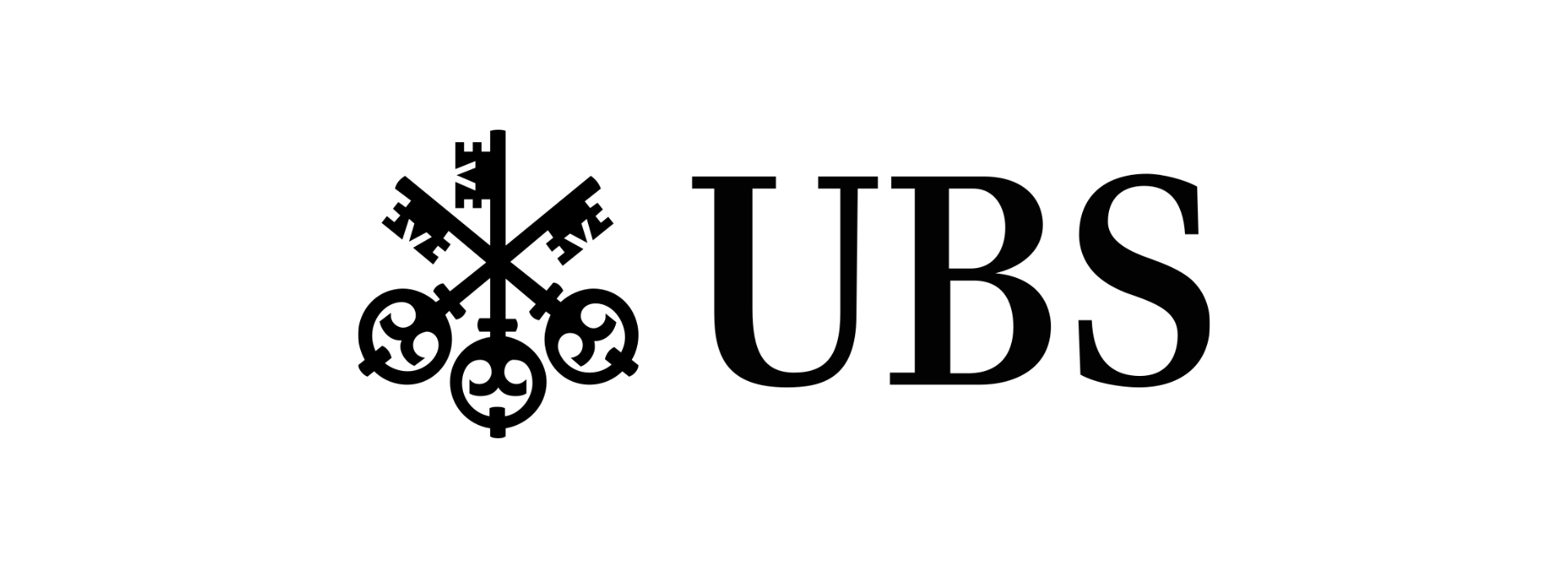Holbein and Dostoevsky
The Dead Christ and its effect
500 years ago, Hans Holbein the Younger created the Dead Christ in the Tomb, which is now one of the icons in the Öffentliche Kunstsammlung Basel. 300 years later, in 1821, the Russian writer Fyodor Mikhailovich Dostoevsky was born. In his novel The Idiot, Holbein's painting makes a memorable appearance, dating back to a visit by the writer to the Kunstmuseum Basel. To mark this double anniversary, the Kunstmuseum Basel is setting up a special presentation centred on the Dead Christ in the Tomb, supplemented by passages from Dostoevsky's novel and scientific findings.
The *Dead Christ in the Tomb by Hans Holbein the Younger (1497/98-1543) was probably commissioned by Bonifacius Amerbach. The painted inscription on the picture, a trompe l'oeil simulating stone engraving on the side wall, proclaims: "M D XXI", i.e. 1521, followed by the master's initials. But of all things, what seems to be carved in stone poses a riddle: According to an infrared reflectography and the X-ray image of the painting, the date originally read 1522. Holbein painted over the last Roman numeral "I" with the same pigment he used for the surrounding surface, i.e. while the work was still being completed. The reason for this backdating is not known. Perhaps the client's serious requests for changes played a role, which are explained in the presentation at the Kunstmuseum Basel.
Fyodor Mikhailovich Dostoevsky (1821-1881) was born in Moscow 200 years ago. He is one of the most important writers of the 19th century. A visit in 1867 connects him with the Kunstmuseum Basel and in particular with Holbein's Dead Christ. His second wife Anna Grigoryevna reports in her memoirs: "The picture made a shattering impression on Fyodor Mikhailovich and he stood frozen before it. [...] It was as if his agitated face showed traces of that horror which I usually perceived in him in the first moments of an epileptic seizure."
Dostoevsky was then preparing his third great novel, The Idiot (1868/69). In this one, the Basel museum visit left traces in five places, and three paintings from the Kunstmuseum are evoked: Hans Fries' Deposition of John the Baptist, the Dead Christ by Hans Holbein the Younger in three separate passages, and the Dresden Madonna, which was still considered a Holbein original at the time. These works will be confronted with the relevant passages from the novel in the presentation in the original Holbein Hall on the first floor of the Hauptbau.
Join a scenic guided tour to see how Dostoevsky meets Holbein.


